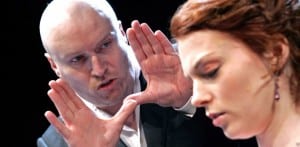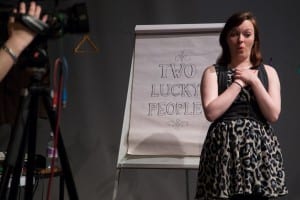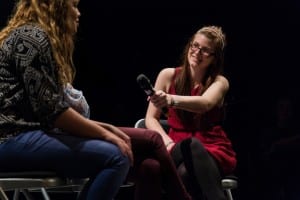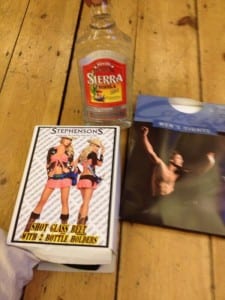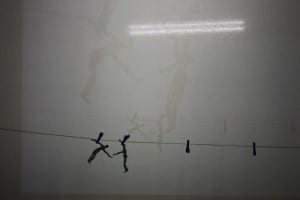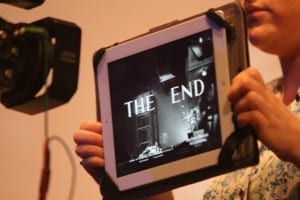
The above still is taken from about halfway through Three Words it is an ending but it is not the end. I can’t help but feel that this is where we are, showing an arbitrary ‘The end’ sign with every intention of carrying on and taking Three Words out beyond Lincoln. There is a lot of work between now and then to make the show lean enough to be profitable in today’s market but I have no doubt that the company will adapt as it has done until now.
The show started as an idea, the perfect final degree show and the phrase ‘A love letter to Lincoln’ was used frequently, it was to be a play about a place that we knew intimately and of our three years here, based partially on the model of shows like Still House’s Ours Was the Fen Country. Still House’s show is about the way people in the fens live, it is verbatim mixed with physical theatre and it attempted to transplant its audience to a place the majority of us had never seen. Dan Canham, the director, afterwards spoke about the difficulties of touring theatre with such strong affinities to a small community and the limited audiences they have come across (Canham, 2014).
We decided to be more ambitious and with much prodding from outside and in we left the idea of Lincoln behind and the show became less a tribute and more of a re-evaluation of love. Different people, performances and perspectives have shaped Three Words into what it has become. There are many other influences that are well documented but Still House was the first company to really make us re-evaluate exactly what we wanted the show to be and there have been many new developments ad cahnges in direction since, in short our greatest assets have been flexibility and ambition.
As for what happens next we will continue to take influence from other companies in how they operate on and off the stage. We will look to our current friends and support in Lincoln and also to other new and emerging companies and the models they are using to survive and gain notoriety for their work. Having spoken to companies like Unexpected Places, Karkinos Theatre and The Flanagan Collective we are beginning to understand the challenges and the opportunities facing No Added Sugar. So while this is the end of this blog, I’m very happy to say there’s still a long time until the curtain falls on us and Three Words.
Works Cited
Canham, D. (2014) Ours Was the Fen Country. [post-show discussion] Lincoln Performing Arts Centre, 5 February.
